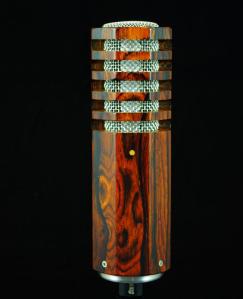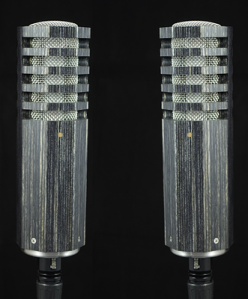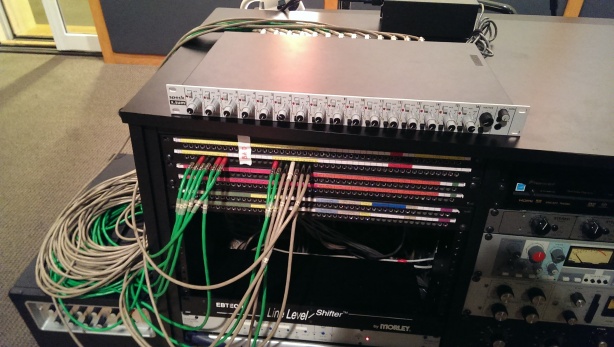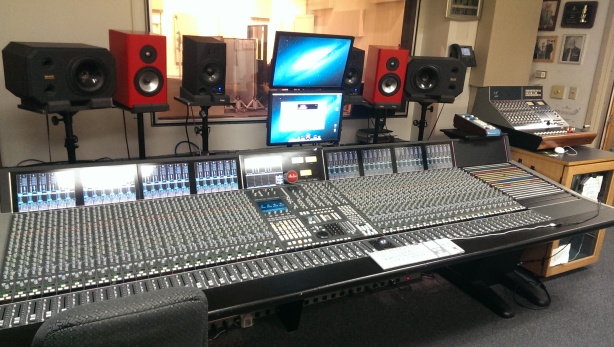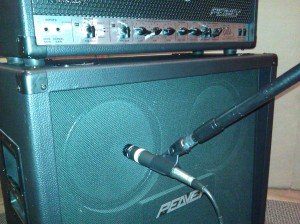Shortly after completing my review of the AEA N22, I was contacted by Patrick Timmons from a company I had honestly never heard of before….Feather Microphones.
Patrick said he had some mics that he wanted me to try out. I was happy to oblige, as I love trying out new gear, and telling my audio friends about it. Patrick sent me two different models, the Black Beauty and the Blonde (ash).
From the moment I opened the UPS package, I knew that Patrick takes pride in his products. They came in an ample sized water tight pelican style case. The mics fit quite snugly in the cushioned insert and further came in a velvet type pouch.
The mics themselves are beautifully designed. They look like a work of art.
As the XLR connector is the only thing occupying the bottom of the mic, they require a generic shockmount that will fit multiple sized mics. Patrick happily sent me an extra to use.
I tried the mics out on a number of different instruments (drum overhead, drum room, upright bass, acoustic guitar, lap steel and ukulele) and shot it out against of few other ribbons and old standbys. I enjoyed the Black Beauty personally, so I stuck with that one for the remainder of my testing.
(At the very bottom you will find a link to download a few samples)
Overall, I found that the Feather excels with acoustic instruments. It sounds quite natural. I honestly wasn’t a fan of it on drums at all. I found it to be quite harsh on the high end, which is odd for a ribbon. The cymbals had a strange bite to them which I found pretty unusable as an overhead or drum room mic, almost like some weird phase incoherence in the upper frequencies. I’d be curious to find out what causes this. I have my assumptions, but I’m not qualified to voice my speculations.
My colleague, Tim Mauldin and I recorded a few acoustic songs for singer/songwriter, Lilly Pappas, and I use the Feather everywhere I could. We put the Feather up against a “ribbon standard” (the Royer R-121) on acoustic guitar. The Feather had an upper midrange that just sounded “right”. I literally didn’t EQ it at all in the final mix. Same with the lap steel. I had the Feather sitting in front of a Fender ’57 Deluxe Reissue. With the exception of notch filtering some hum out of the amp, no EQ was used and no compression was used.
On upright bass, it sounded surprisingly close to my AT4050. The Feather had a bit more “woodiness” to it. So if you’re looking for a natural sounding mic for bass or maybe cello, this mic is great. I ended up using the Feather in my mix over the AT4050. Although the AT was more than usable and maybe even had a rounder bottom, the Feather just seemed sit better in the mix.
If you are looking for a nice neutral ribbon mic for acoustic instruments, I would seriously consider getting your hands on a Feather. They will definitely be an eye catcher for your clients as well. The only big turnoff I would say is the price. I can get an AEA N22 which is also a fantastic ribbon for $300 less. Granted, they aren’t for the same purpose, in my opinion, but there are a lot of mics you can also buy for $1200. Although, I could argue that the service is second to none, Patrick is fantastic, and you would be supporting a small startup business. He was extremely responsive with any questions that I had, and went out of his way to make sure I had a good experience with his gear.
Here is a link to download a few samples of the mic.
In the zip file you will find a comparison of the Feather and Royer on acoustic guitar, lap steel, and bass. For guitar and steel, the mics were place right next to each other. On the upright bass the AT4050 is about 1 foot above the bridge, and the Feather is right at the bridge (so not a completely direct comparison). There is also a song that was recorded using almost entirely the Feather microphone (all stringed instruments). It turned out pretty amazing I think. Virtually no EQ or compression on this track. Vocal performance by Lilly Pappas Bjorklund, and all other instruments performed by Tim Mauldin.
Alternately, you can stream the song below.
